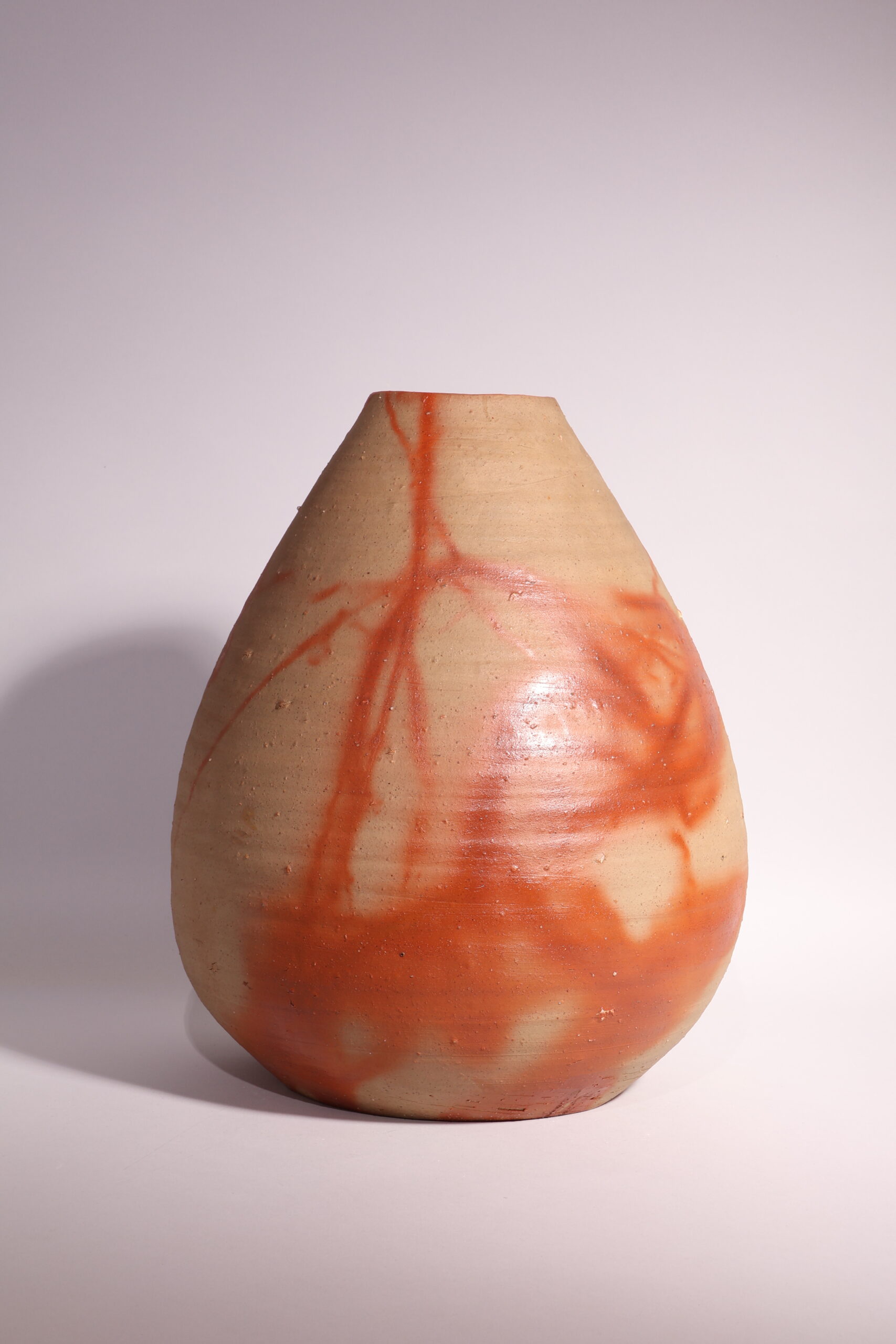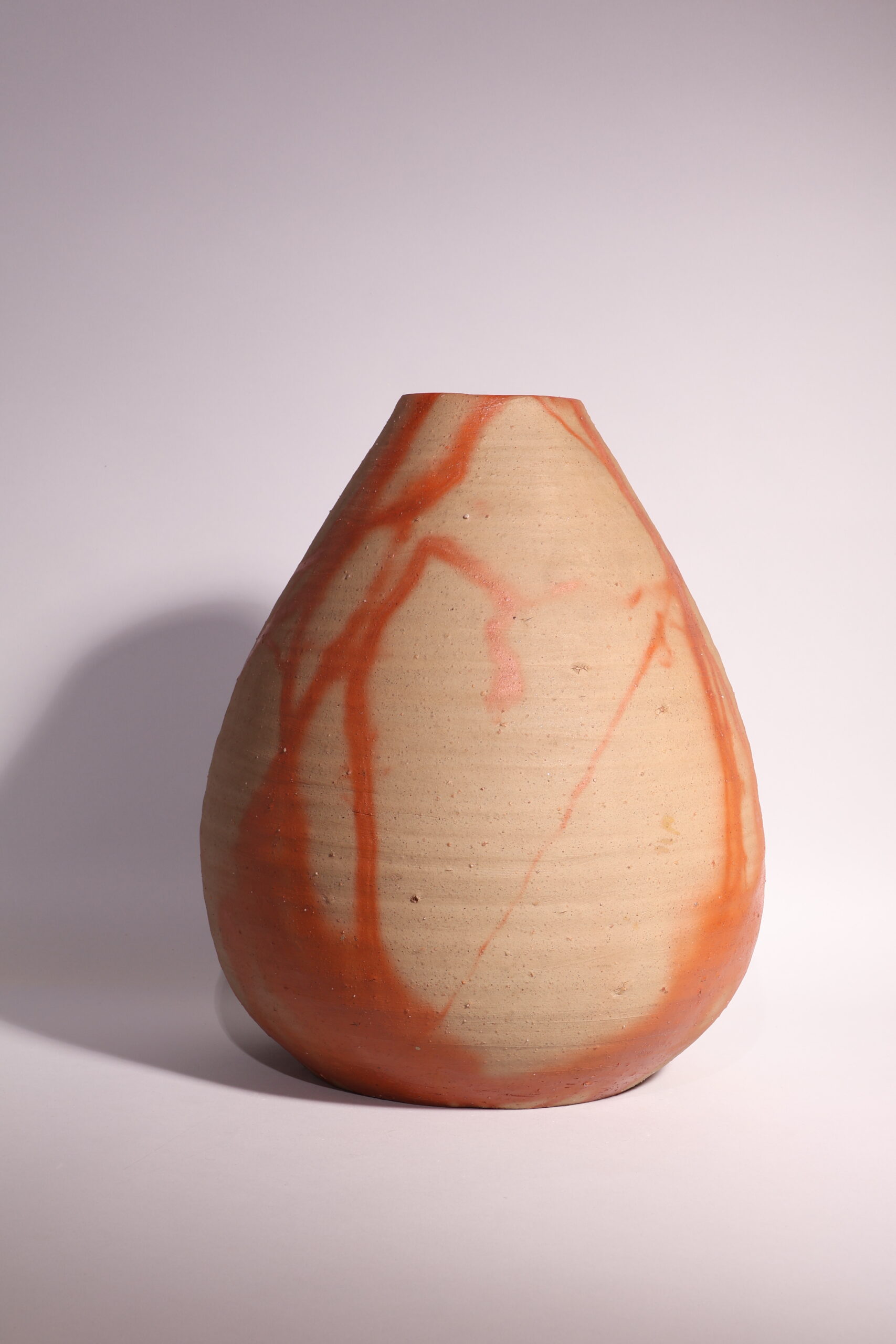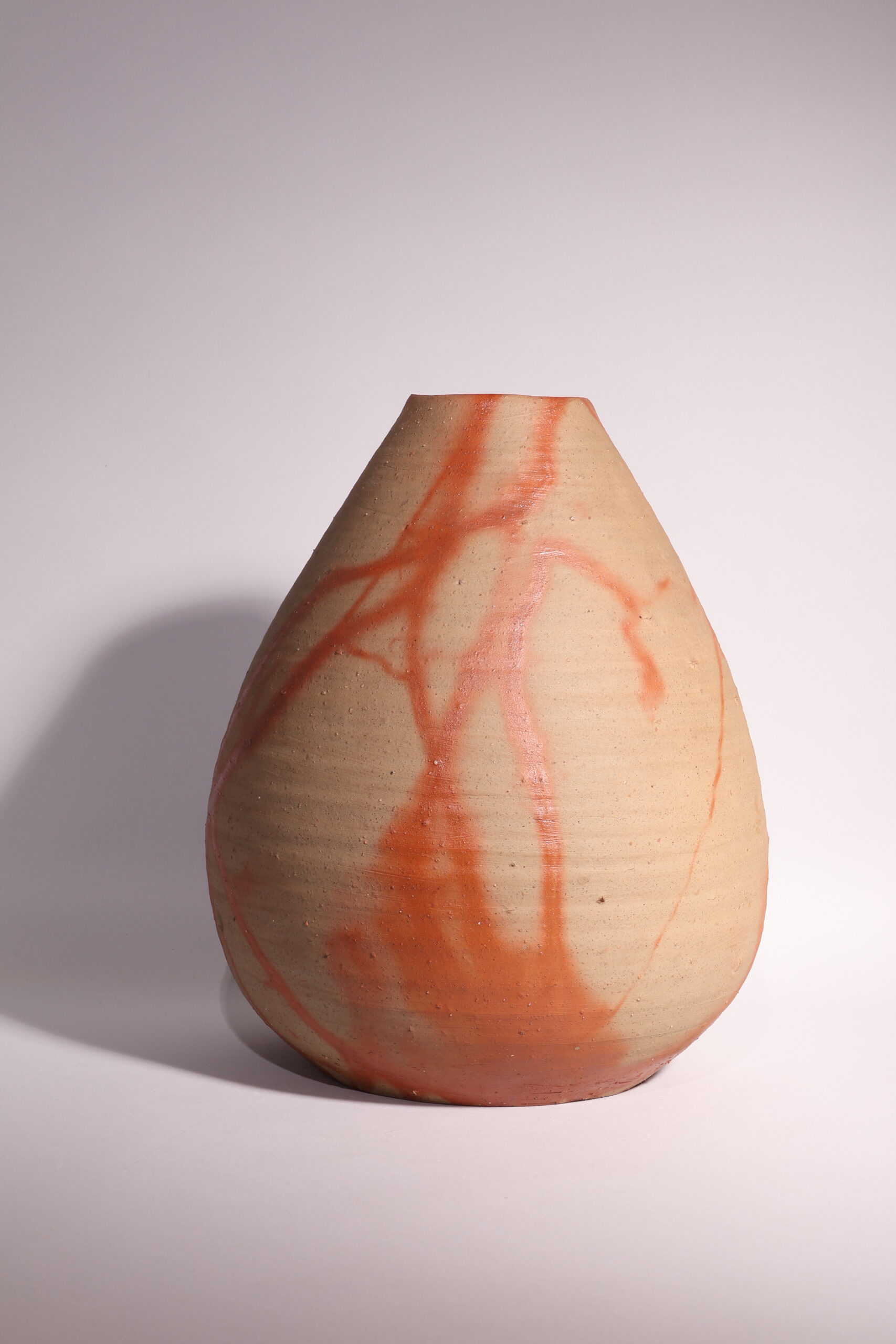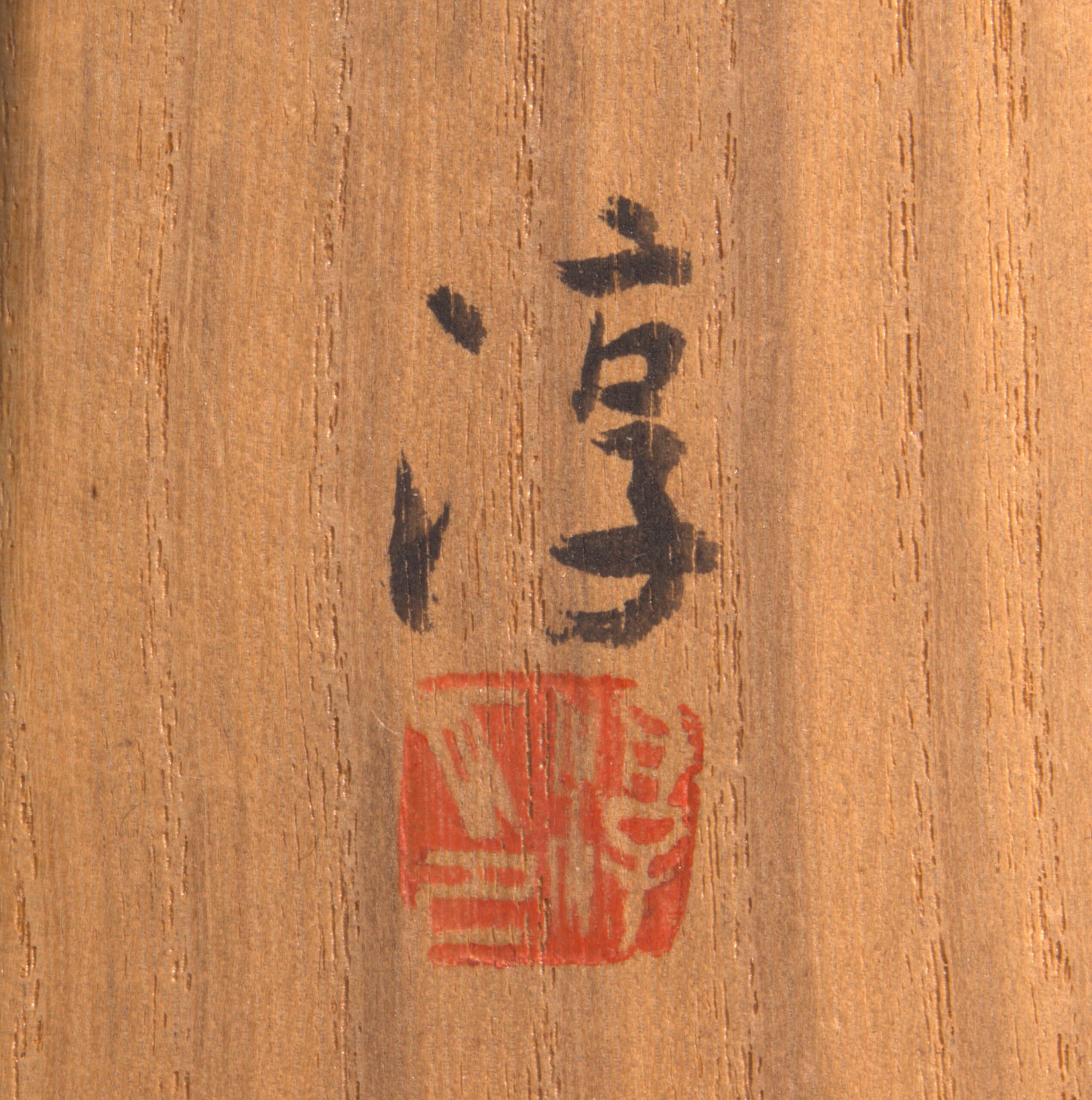Chinese & Japanese Porcelain
BIZEN WARE VASE BY LNT JUN ISEZAKI (1936- )
BIZEN WARE VASE BY LNT JUN ISEZAKI (1936- )
Japan, Heisei period (1989-2019)
Height: 31,5 cm.
An earthenware vase with a rounded, teardrop-like or ovoid form, gently tapering towards the top. Its sandy beige surface is adorned with organic, orange flame-like patterns, the result of the hidasuki technique—a traditional wood-firing method. These irregular, intertwining lines wrap around the form, enhancing its natural aesthetic. With no applied glaze, the piece highlights the raw beauty of the clay and the subtle effects of the firing process, giving it an unrefined yet elegant character. The wide base ensures stability, while the narrowing upper section contributes to its graceful, organic silhouette.
Jun Isezaki was born into a family deeply rooted in the traditions of Bizen ceramics, the second son of renowned ceramic artist Yōzan Isezaki (1902–1961). Growing up in this rich artistic environment, he absorbed the ancient techniques and philosophies that had defined Bizen ware for centuries.
After graduating from Okayama University in 1959, Jun returned to his family’s craft, apprenticing under his father, who had been officially recognized by Okayama Prefecture for his contributions to preserving Bizen ceramics. Under Yōzan’s expert guidance, Jun refined his mastery of clay, fire, and form, developing a deep understanding of the art.
Following Yōzan’s passing in 1961, Jun and his older brother, Mitsuru Isezaki (伊勢﨑満), took on the responsibility of continuing their father’s legacy. That same year, they undertook a major project—restoring Koyasan (姑耶山), a medieval-style semi-underground anagama(tunnel kiln). This traditional kiln allowed them to create authentic Bizen ware tea bowls, keeping alive the time-honored aesthetic and spirit of their ancestors.
Jun’s dedication to his craft led to his induction as a full member of the Japan Kōgei Association (日本工芸会, Nihon Kōgeikai) in 1966, a prestigious organization committed to the preservation and advancement of traditional Japanese arts. His influence extended beyond his own work; from 1978 onward, he taught in the Art Department at Okayama University, nurturing the next generation of ceramic artists.
His excellence in Bizen ware was widely recognized, earning him the Kaneshige Tōyō Prize in 1981. In recognition of his exceptional contributions to Japan’s cultural heritage, he was designated a Living National Treasure on September 2, 2004 – the highest honour in the country’s traditional arts.
Works by Isezaki Jun can be found in many prestigious museums such as the British Museum (London) , Musée Tomo (Tokyo), Brooklyn Museum (New York), Musée Cernuschi (Paris) and others.
Price upon request
Object #251
If you need more information, send us an e-mail directly.
Please mention the object number in your enquiry.





